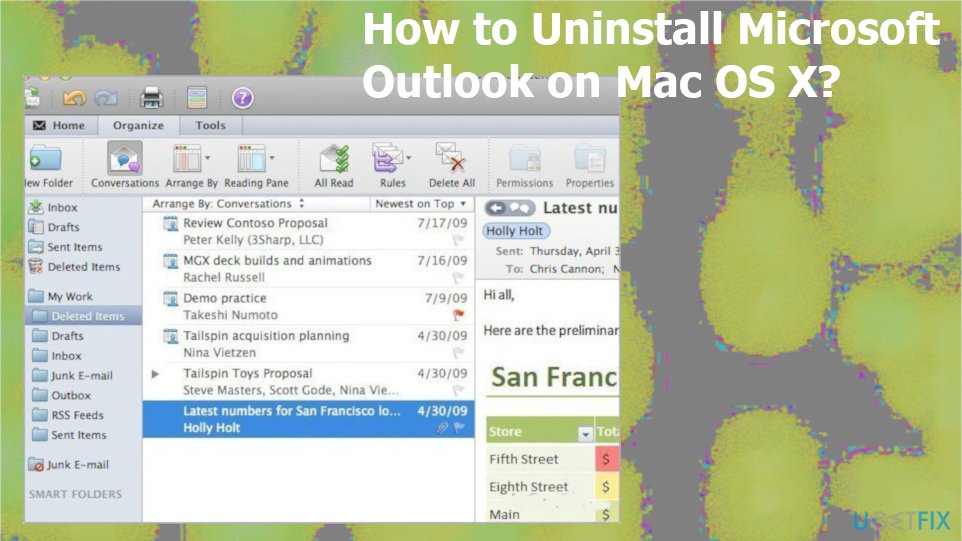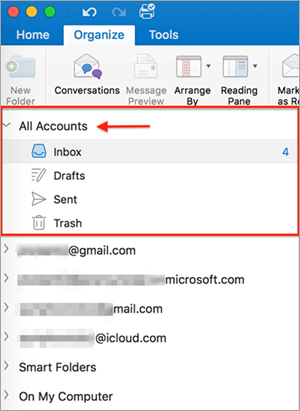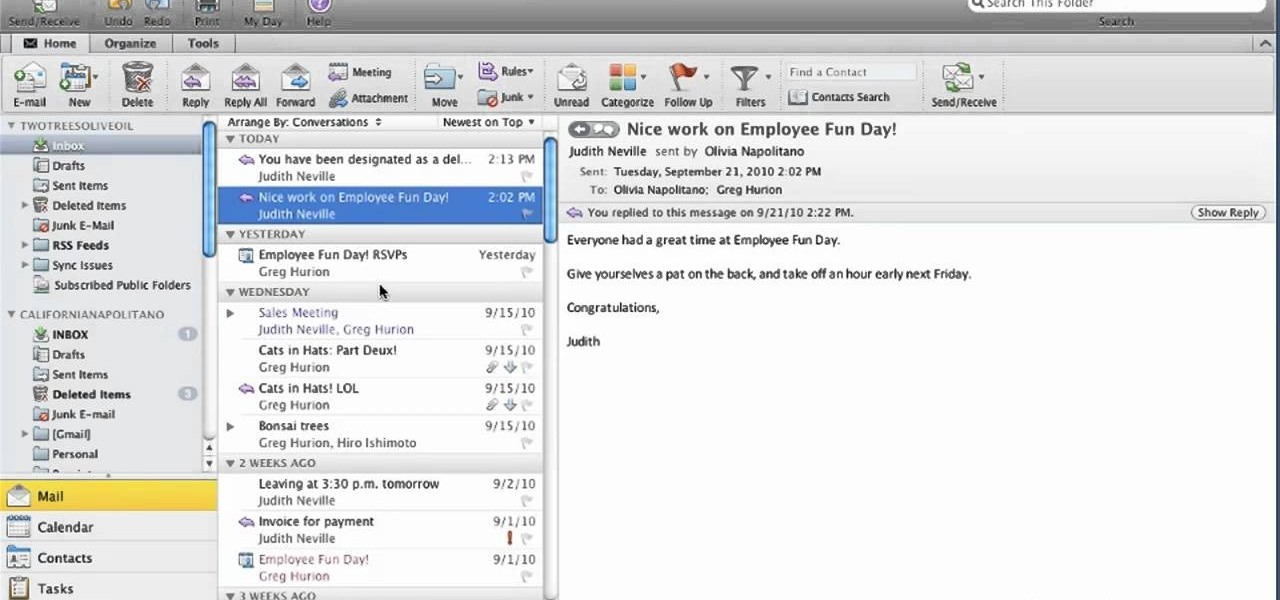 Topics Map > Microsoft 365 > Mac
Topics Map > Microsoft 365 > MacOutlook For Mac Turn Off Smart Folders On Mac In the folder list view, all your folders are listed out including mail folder, calendar folder, contacts folder and so on. You can switch among these different types Outlook folders easily inside the folder list view in the Navigation Pane. View messages from multiple accounts. Select All Accounts in the upper left, and then click Inbox. Show or hide the ribbon. Select View Ribbon. Show or hide the sidebar (folder pane) Select View Sidebar. Show or hide folders. Select Outlook Preferences General. Select Show all account folders. A smarter way to work. Outlook uses AI to anticipate your needs, help you stay organized, and plan ahead. Easily search and find files, contacts and emails. Intelligent calendar reminds you when to leave for meetings. The following explains how to use tasks in Outlook 2016 for the Mac: Accessing Tasks 1. Click the Tasks button at the bottom of the Navigation Pane. Figure 1 - Task Button 2. The Task pane will open. Under Tasks and Smart Folders, you have various options in selecting how you view your tasks. You may also add additional folders as needed. If you delete a search folder, you will even receive a message that tells you as much. Note: be careful when you do so that you are selecting Delete Folder, not Delete All. Mac Users: Smart Folders. Mac users, it is finally your turn! While you don’t have Search Folders, you have something arguably cooler. They are called Smart Folders.
By default, messages that are sent to you are stored in your Inbox. But you can organize your messages into a hierarchical folder system and adjust it as your needs change.
Default folders
Your account starts with these default folders:
- Inbox Incoming messages arrive in your Inbox unless you've created an Inbox rule to redirect them to another folder, or they're identified as junk email.
- Drafts If you create or respond to a message, but can't finish it right away, it will automatically be saved to your Drafts folder. You can come back to the message later to continue editing it, and then send it.
- Sent Items By default, a copy of every message you send is put in your Sent Items folder.
- Deleted Items When you delete a message, it's moved to the Deleted Items folder.
- Junk Email Messages that have junk email characteristics but that aren't blocked by a spam filter before they reach your mailbox will automatically be moved to this folder.
You may see other folders that have been created by your administrator.
Right-click menu for folders
Most of what you can do with a folder will be found in the right-click menu. Actions you can take include:
- New Folder Use this to create a new sub-folder in the folder you right-clicked. Note: Due to possible mail delivery and syncing issues, do not create subfolders of the 'Inbox.'
- Rename Folder Rename the folder. You can't rename the default folders, such as the Inbox folder.
- Delete Delete the entire folder. Delete will move the folder to the Deleted Items folder.
- Delete All Deletes everything in the folder, including any sub-folders.
- Move Folder Opens a window where you can select a folder to move this folder to. You can also move a folder by clicking it and dragging it to where you want it.
- Mark all as read Marks every item in the folder as read.
- Permissions Allows you to manage who has access to your access.
- Folder Properties Allows you to review your storage, permissions, and other settings related to your account.

Creating folders
You can create additional folders to organize your messages any way you want. For example, you can create a folder for a specific project, or for all messages sent by a particular person, or all messages sent to a distribution group that you're a member of.
To create a new folder, right-click the parent folder you want to create the new folder in. If you want a top-level folder (a folder at the same level as your Inbox), you would use your mailbox as the parent folder. Note: Do not create subfolders of the 'Inbox' due to possible mail delivery and syncing issues.
To create a folder within your account:
Smart Folders On Pc
- Right-click your account.
- Click New Folder.
- Type the name you want to use for this folder and press Enter key.
Delete Folder Outlook Mac
Moving folders
There are two ways to move a folder.
Outlook Smart Folders Windows
- Click the folder you want to move and drag it to where you want it.
- Right-click the folder you want to move and click Move Folder. A window will pop up that will allow you to search for the destination folder. Click the folder you want to move to and click Move. Or click Cancel to close the move folder window without moving the folder.
The Deleted Items folder


When you delete a message, it's first moved to the Deleted Items folder. You can either let messages stay there, or you can set Outlook to automatically empty your Deleted Items folder when you sign out. Your administrator may have set up a policy to empty items from your Deleted Items folder after they've been there for a preset number of days. For example, there may be a policy that removes anything that's been in your Deleted Items folder for 30 days.
What else do I need to know?
- The folders you create can be at the same level as your default folders, for example, the Inbox or Sent Items folders. Or, you can create sub-folders within any existing email folder. Due to possible mail delivery and syncing issues, do not create subfolders of the default 'Inbox' folder.
- If you want to create a personal information folder as a sub-folder to a mail folder, you can create the folder and then move it to the location you want. Some folders, for example, the Inbox, can't be moved to another location.
- Some folders, for example, the Inbox, can't be renamed. If the folder can't be renamed, the Rename option in the menu will appear dimmed.
- After you delete a folder, it's moved to the Deleted Items folder. The folder isn't permanently removed until you empty the Deleted Items folder or delete the folder from the Deleted Items folder.